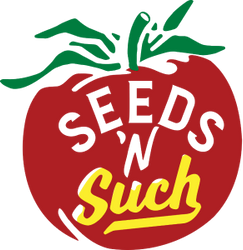
Deciphering Cultural Information on Seed Packets
Although much of the information is quite straightforward, even experienced gardeners sometimes have problems deciphering all the various letters and numbers provided on seed packets, particularly with those regarding disease resistance, especially with hybrids and most notably with tomato varieties. A good overall gardening strategy is to decide what crops and varieties you wish to grow; order your seeds early to insure availability; and after the seeds arrive, map out where your seeds need to be planted. Be sure to consider necessary crop rotations, space requirements and recommended time of planting, as well as allowances for possible disease and pest pressure for certain crops.
Plan for which crops you want to sow (directly seed) into the garden and which crops you want to pre-germinate seeds indoors or in a heated greenhouse. These seedlings will need to be hardened off to withstand outside conditions before transplanting to the garden when soil temperatures are favorable for planting that crop. To aid you in planning your garden and planting your seeds, we offer several tools that will save time and effort.
Our Soil Tester will provide readings for both soil pH (acidity or alkalinity) and soil fertilizer levels in just one minute to determine whether that garden spot is right for your intended crop. Our Dial Seed Sower is handy for direct-seeding and the Plunger-Type Seed Dispenser is perfect for sowing seeds in trays and containers. Both reduce seed waste and help insure proper spacing. Another useful planting aid is a soil thermometer that determines if soil temperatures are optimal for planting your desired crop.
Our seed packets are jam-packed with specific planting information on the best cultural conditions for each individual crop, including sowing depth, spacing and anticipated time until germination. Also highlighted are specific requirements for direct-seeding in the garden and for pre-germination of seeds in trays for transplant seedlings. Instructions include requirements for thinning to the proper final spacing between plants and rows for best growth and yields.
As we mentioned earlier, some of the more difficult seed packet information to comprehend are the letters and numbers denoting hybrid disease resistance, most notably those appearing after the names of tomato varieties. An excellent example is our “early bird” free seed packet of Experimental SV7846TH Hybrid Tomato VFFNTTylc, the latter group of letters meaning that this variety is resistant to diseases V (Verticillium Wilt), FF (Fusarium Wilt, Races 1, 2), N (Nematodes), T (Tobacco Mosaic Virus) and Tylc (Tomato Yellow Leaf Curl Virus).
The letters are used due to space limitations on the packet, but we also provide the complete reference list of letter code tomato disease resistance on page 7 of our 2020 catalog or here on our website. If you have problems with any of these diseases in your gardening region, the code list will make it easier to choose which varieties will best suit your needs.
